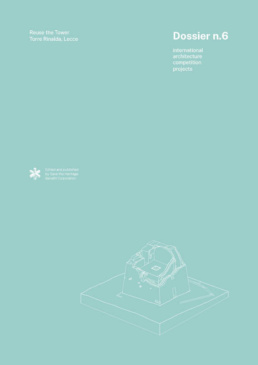The notion of reuse can be related to the concept of life, and life inside space. In Building, Dwelling, Thinking Martin Heidegger explained in a phenomenological way how the primary purpose of a building is dwelling and how buildings acquire meaning through the act of dwelling. According to his statement, a building (and ruin) can be considered alive when someone dwells in it, and when its space can be experienced, as the pulse of a human being is extended over the stones.
Ruins from all over the world keep telling us the stories and needs of different millennia, historical evidence to be preserved, but, at the same time, are these buildings potentially able to host contemporary tales?
An important theorist of the XX century, Cesare Brandi, explained that the restoration project is a methodological moment of acknowledgment, which implies an act of identification in terms of physical elements and historical purposes. Following this definition, a new intervention to bring back life inside a ruin, operating with an approach of distinguishable layering, should belong to the contemporary realm of architectural language, responding to present-day necessities. Still, it should also be felt in continuity with the historical narrative of the building.
Is it possible to bring the experiential dimension back inside a ruin? August Perret stated, beautiful architecture produces a beautiful ruin, but when does a building become a ruin? When does it exhaust its function and becomes evidence of a precedent step of civilization? or when should it be kept abandoned?
The architecture discipline, differently from artworks and technological products, which uniquely belong to their time, deals with organisms of different ages. It can reinvent itself and, through the resilient act of transformation, become something new but still represent its original idea.
ISBN (paperback): 979-12-210-1052-7
ISBN (ebook): 979-12-210-1808-0
Language: English
Dimensions: ISO A4 (ebook – PDF format)
Pages: 202
Articles:
The ruin in the world: from Heidegger’s Kunstwerk to Baudrillard’s objet ancien – André Patrão, École Polytechnique Fédérale de Lausanne
Speaking Ruins – Andreea Mihaela Chircă, UAUIM, Bucharest
Dynamic Restorations: Carlo Scarpa and the Evolution of the Querini Stampalia Palace in Venice – Anne Catrin Schultz, Wentworth Institute of Technology
Unfolding Oblivion – Ayla Schiappacasse, University of Genova
The Profanation of Ruins – Fabiano Micocci, University of Thessaly
Life Within Ruins – Francesco Chiacchiera, Marche Polytechnic University
Active Reuse and a New Narrative of Ancona’s Archaeological Heritage – Gianluigi Mondaini, Marco Rosciani, Marche Polytechnic University
Cultural Resilience: Circularity as Duration and Memory Tool – Kevin Santus, The Polytechnic University of Milan
The Brittleness of a Glass Dream – Laura D’Onofrio, The Polytechnic University of Milan
Rubble and Regeneration – Luca Trabattoni, Sara Ventura, Opole University of Technology
The Rejuvenation of a Gothic Ruin in Westkapelle, Flanders – Marcus van der Meulen, RWTH Aachen University
Resilient Heritage. Recycling Unused Spaces as Commons – Maria Giada Di Baldassarre, Marche Polytechnic University
2021: A Surviving Archaeology. Life, Death and Rebirth of Ruins Trough Reuse – Bruna Di Palma, Marianna Sergio, University of Naples “Federico II”
Inhabited Ruins. Designing Amidst the Remains and the Shapes of Memory – Marta Lombardi, The Polytechnic University of Milan
Memoria Mirabilis. Over-Writing, Not Over-Designing – Mattia Cocozza, Iuav Univeristy of Venice
Tua Valley Interpretive Centre: Memory Exercise – Pedro Azevedo, Susana Rosmaninho, Lusíada University of Porto
The Intangibility of Ruins and Monuments. Human-Nature Relationships and Craft Performances – Sascha Bauer, University of Stuttgart
The Grand Villa Adriana. Designing the Unesco Buffer Zone – Valerio Tolve, The Polytechnic University of Milan
↓ Look inside ↓
Copyright © 2022 Reuseitaly












